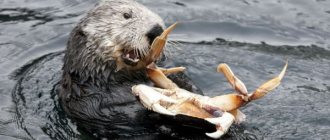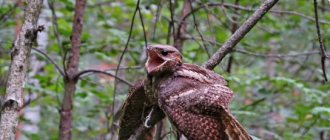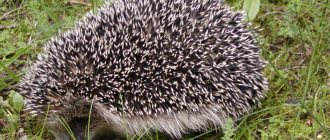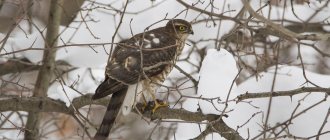Imagine barren lands that are unsuitable for tree growth, too cold for many animals and too isolated for most people. Although such a place may seem incredible, there is a natural area on our planet that fully matches this description, known as the tundra. The uniqueness of this region lies in the harsh climate, as well as the scarcity of flora and fauna.
The tundra is one of the youngest natural areas in the world. According to some estimates, its formation occurred about 10,000 years ago. It is located in the northern parts of Asia, Europe and North America, as well as in the high mountains of the mid-latitudes and distant regions of Oceania and South America. Some areas of Greenland and Alaska are good examples of tundra. However, this natural area also covers large areas of the northern regions of Canada and Russia.
What is tundra
The tundra is an endless expanse of ice with a snowy northern steppe. In most of the territory there is no high vegetation at all. The deep layer of permafrost does not allow plants to take root. But unlike the steppe zone, the soils here are infertile. The scarcity of flora and climatic conditions make life difficult for animals and people.
The term “tundra” comes from the Finnish word “tunturi” (high treeless mountain). Indigenous peoples colloquially refer to their homelands as "senduha".
The features of this natural zone are a long-term non-melting ice cover, swampy lowlands, persistent long-term frosts and strong winds blowing throughout the year.
The tundra zone lies beyond the northern boundaries of forest vegetation (above the taiga) and passes through the territory of permafrost.
Blueberry
It is a low shrub. Blueberries are another spectacular representative of northern berries. It is a close relative of blueberries and lingonberries. It would take a very long time to describe its beneficial properties. Blueberries are most often used for eye, cardiovascular, gastric and intestinal diseases, as well as diabetes. It may be easier to tell what this plant does not contain, and what diseases it does not treat.
By the way, blueberries are very popular among gardeners living in warmer climates for their taste and medicinal qualities.
Types of tundra
The natural zone is classified according to the nature of the surface (swampy, rocky, peat) and geographical location. The main ones are considered to be 5 biomes.
arctic tundra
Arctic tundra during the thaw period
Extends along the northernmost edges of the mainland and islands. Severe frosts (up to 60 0C) and powerful snowstorms rage throughout most of the year. The depth of permafrost ranges from 50 to 95 cm. In summer, the temperature does not rise above 6 0C.
A significant area is occupied by swamps and lakes. The flora is quite sparse and is represented mainly by crustose lichens and mosses. During the thaw period, grasses and flowers come to life in the hollows. There are no shrubs or dwarf trees at all.
Middle subarctic tundra
Photo of the tundra on the Malaya Belaya River
The climatic conditions of the biome are a little milder, because it is located south of the Arctic tundra. For a short time, the cold recedes and is replaced by warm, albeit sunny days. In summer, the air temperature rises to 10 0C, and this has a beneficial effect on representatives of flora and fauna. Mosses and lichens grow on the territory, and among the animals, rodents, white hares, wolves, deer and owls predominate.
mountain tundra
Mountain tundra
It is located at high altitudes, between the mountain forest and snow-glacier belts. The biome limits decrease as you approach the poles, and then the mountain tundra turns into polar tundra.
The ecosystem is found in the mountains of Eurasia, North and South America, and even in the Crimea. Permafrost, strong winds and low temperatures create an unfavorable climate for plants. Low-growing shrubs grow near the border with the forest. As the altitude increases, they are replaced by herbaceous flora, mosses and lichens. In summer, the lower part of the mountain tundra is inhabited by migrating birds.
Forest-tundra
Forest-tundra
The territory occupies the border strip between the forest zone and the tundra. It's much warmer here. Summer lasts about a month; the air temperature these days rarely drops below 12-15 0C.
In the open spaces there are bushes, flowering plants and dwarf trees. They grow rather scatteredly and only in the east form tundra forests (thickets of low-growing trees). The climatic conditions of the forest-tundra are excellent for the growth of moss. A large number of plants attract reindeer. The area is also inhabited by hazel grouse, wood grouse, white hares, brown bears, and moose.
Interesting: Rivers of Russia - List, length, description, characteristics, location, photos and videos
Antarctic tundra
Antarctic Tundra
Biome is located in the Southern Hemisphere and extends across several islands and large parts of the Antarctic Peninsula. The climate of the ecosystem is very cold and dry, and the surface is covered with non-melting ice fields. Only in the west and north of the Antarctic Peninsula are there small areas free of snow cover. Several species of flowering low-growing plants grow here (Antarctic meadow grass, Quito colobanthus). Reindeer moss, lichens and some types of terrestrial algae are found in the coastal rocks.
Classification
Natural areas can be divided into three main types:
TOP 2 articles
who are reading along with this
Natural area description plan
Natural areas: animal representatives
- arctic tundra;
- alpine tundra;
- Antarctic tundra.
Some experts also propose the following zonal classification of the tundra of the Northern Hemisphere:
- Arctic;
- Average;
- South.
Each type of tundra zone has its own special characteristics. In order to describe them briefly and present them, for example, in a message, it is necessary to adhere to a plan.
Natural conditions of the tundra
The lack of fertile soils, strong winds, extremely low temperatures throughout most of the year and permafrost make the tundra virtually uninhabitable for animal, plant and human life.
Despite the most difficult natural conditions, people developed these lands many thousands of years ago. The bulk of the population is concentrated on the shores of fresh water bodies. Unable to grow grains, vegetables and fruits, indigenous peoples adapted to survive through fishing and hunting.
Residents of remote areas are engaged in livestock farming. This is mainly bird breeding (partridges, ducks, geese) and deer farms.
Diamond sheet
Diamond leaf is a plant from the willow family, but has significant differences from its other representatives. These are low willows that grow close to the ground. Like wild rosemary, it has a kind of hair that covers its stems and roots and also retains heat. Diamond leaf is an edible plant consumed by both humans and animals as it is rich in calcium and other vitamins. The plant is very flexible and grows separately, it cannot be found in groups of plants protected from harsh winds.
Where is the tundra
Location of the tundra on the map
The territory of the natural zone extends along the northern coast of Eurasia and North America, covering several islands of the subpolar zone.
A significant part of the zone is located on the Russian mainland, starting from the western borders of the state, it stretches in a continuous strip along the shores of the northern seas and ends at the Bering Sea.
Interesting fact : the tundra occupies 11% of the total area of Russia, which is approximately 1.8 million square meters. km.
In North America, it passes through Canada, occupying almost ¼ of the country’s area, and in Alaska. In Europe, tundra is found only in Greenland and the Scandinavian countries.
A small tundra zone is located in the Southern Hemisphere, stretching in a broken line across the islands of Antarctica and the Patagonian mountains.
Annual cycle
In the tundra, the seasons and days are outlined quite specifically. Winter begins in the second half of September and ends only at the beginning of July . In December, the sun goes below the horizon and the long polar night . At the end of February, the star appears again and the length of the day increases. In the first days of April you can observe white nights, and from the second half of July the sun does not set at all .
Relief and soils
Tundra landscapes
Tundra landscapes
Tundra landscapes
Tundra landscapes
Tundra landscapes
The tundra landscape is predominantly flat. In some places, the surface of the earth is decorated with incredible patterns formed due to the constant melting and freezing of the top layer.
Interesting fact : the largest rivers in Russia - the Yenisei, Lena and Ob - flow through the tundra.
The few hills of the relief are pingos. In summer, snow begins to melt, but does not evaporate, but accumulates in the soil. With the arrival of cold weather, the water freezes and pushes the lower layers of soil to the surface. The unique hills are located in Northwest Canada (near the Tuktoyaktuk Peninsula) and are considered a national landmark of the country.
The soils of the tundra are waterlogged, acidic, with an insignificant supply of nutrients. There are several main types:
- gley;
- turf;
- sour brown;
- swamp-tundra podzolized;
- polygonal peatlands.
The soil in the northern part of the tundra contains only 3-5% humus and is considered the most infertile.
Literature
When preparing the article, materials from the books were used:
- Great Soviet Encyclopedia. (In 30 volumes.) Ch. ed. A. M. Prokhorov. Ed. 3rd. M., “Soviet Encyclopedia”. 1977. T. 26 Tardigrades - Ulyanovo. 1977. 624 p. from illus.
- Soviet Union. Geogr. description in 22 volumes. Russian Federation: General overview and the European North. Rep. ed. S. V. Kalesnik, A. V. Darinsky. M.. “Thought”, 1971. 565 p. from illustration, map. and diagram
- Orlyonok V.V., Kurkov A.A., Kucheryavyi P.P., Tupikin S.N. Physical Geography: Textbook / Ed. V.V. Eaglet. Kaliningrad, 1998. – 480 p.
- Physical Geography: Reference. materials: Book. for middle school students and Art. age / A.M. Berlyant, I.V. Dushina, N.P. Neklyukova, E.M. Rakovskaya. – 2nd ed. – M.: Education, 1995. – 288 p.: ill.
- Encyclopedia for children. T. 3. Geography. – 3rd ed., revised / Chapter. ed. M. D. Aksenova. – M.: Avanta+, 1997. – 704 p.: ill.
Climate
The taiga has a harsh climate to which not every animal can adapt.
The tundra is located in the subarctic zone, characterized by a small number of warm sunny days and prolonged cold weather. The average temperature throughout the year is 1 0C.
The tundra territory is constantly at the mercy of cold winds. In summer they blow from the Arctic Ocean, and in winter from the mainland. Average wind speed is 5-10 m/sec.
Atmospheric precipitation is quite rare here. During the year their number does not exceed 150-300 mm.
The spring-autumn period accounts for only 2 months. In May, the snow cover begins to disappear a little, but by the end of September it forms again.
Interesting: Animals of swamps - list, name, types, description, characteristics with photos and videos
The longest season of the year is winter. For six and sometimes nine months, frosts persist in the vast tundra (40-50 0C). The strongest storms and blizzards rage for several days, subside for a short time, and then resume with even greater speed. Sometimes gusts of wind reach such power that they knock down animals. Towards the middle of the season, the endless expanses are shrouded in the polar night. It lasts for several months.
Interesting fact : in December-January you can see one of the most beautiful natural phenomena over the tundra - the northern lights.
The climatic summer lasts for several weeks. In such a short period (2-2.5 months), only a small part of the top cover has time to thaw (up to 10 cm). Moisture does not penetrate deep into the soil, but accumulates on the surface. The predominance of low temperatures retards evaporation; its share is significantly less than the amount of precipitation. This leads to the formation of many swamps and lakes.
The sun's rays do not indulge in warmth, and even on the hottest days the air temperature is no more than 10-11 0C. In July the thermometer does not rise above 4 0C. Summer in the tundra is not complete without frosts and precipitation in the form of snow.
Few species of animals and plants can adapt to such harsh climatic conditions.
Cloudberry
Even if you are unfamiliar with many tundra plants, cloudberries are likely an exception. It is a perennial herb with a bony fruit that looks like an orange raspberry. It is considered a valuable commercial plant. Both its leaves and flowers and fruits can be harvested. Like many tundra plants, cloudberries are a striking example of northern flora: they ripen in a short period, and the fruits are simply a storehouse of vitamins and minerals. It contains cobalt, potassium, iron, chromium, phosphorus, sodium, copper. The vitamin A content is higher than in the recognized leader - carrots, and vitamin C is higher than in an orange.
Animal world
A certain number of animals live in the tundra, but there are not so many species of animals and birds that have adapted to harsh climatic conditions. This is mainly due to the geographical location of the natural area.
Arctic fox
Arctic
fox Arctic fox is one of the most typical inhabitants of the tundra. Warm long fur perfectly protects the arctic fox from cold weather and snowstorms. The unusual pigment of the eyes prevents the animal from going blind from the sight of shining snow. The predator rarely stays in one place and is constantly searching for food.
Reindeer
Reindeer
Constant cold does not frighten the animal; it is best suited for life in such conditions. Every year the deer sheds its huge antlers, and its thick and thick hair protects it from any frost. Together with the herd, he wanders across the tundra in search of food. It feeds mainly on plants.
Polar bear
Polar bear
The most dangerous predator living in the tundra, it is distinguished by its enormous size and strength. The massive body of the animal is covered with thick thick white hair with a yellowish or green tint. Polar bears feed on sea animals, fish, bird eggs or grass. They live in tundra forests in winter, and in the warm season they move to colder places.
Gopher
Gopher
This furry little animal seems harmless at first glance, but its long, sharp claws on its front paws and fast speed can make you doubt it. As a rule, gophers stock up on food for the winter; they do not need to obtain it in the cold seasons. Animals emit a whistle that is characteristic only of them, by which an invisible animal can be detected.
Arctic hare
Arctic hare
The color of the animal changes depending on the time of year. In winter it is white, and in summer it is gray-brown. He moves quickly and deftly, making him quite difficult to see. The polar hare is much larger than representatives of other related species. It feeds on tree bark and branches.
Ermine
Ermine
A cute and helpless animal at first glance, it is actually a predator. The body of the ermine is quite elongated, covered with warm snow-white fur. The animal is classified as an endangered species, because stoats have very valuable fur.
Interesting: Desert - Description, features, classification, flora, fauna, photos and videos
polar owl
Polar Owl
The bird is distinguished by its shining white plumage, with dark blotches visible on its wings. The color allows it to remain invisible during cold weather. Being the largest of all owl species, the polar owl hunts during the day, searching among hares and birds for suitable prey.
Pink seagull
Pink Gull
The bird's unusual color and small size do not prevent it from surviving in harsh conditions. The main color is light pink, but a bluish tint can also be seen on the wings. The seagull feeds on insects and fish. It is listed in the Red Book and is on the verge of extinction.
Interesting fact : the tundra is home to one of the rare species of animals - the musk ox. The largest population (about 8 thousand individuals) lives on the Taimyr Peninsula.
Tundra birds
The fauna of the tundra is also represented by birds. The most famous eider is a large sea duck. It is famous for its exceptionally warm down, which lines the nest and covers the eggs. This gray fluff is very valuable, so it is collected. From one nest from which the chicks have already left, you can get 15-20 grams of pure fluff.
The eider does not fly away for the winter, but swims away from the coast - to where the sea has not yet frozen.
The white partridge is also a permanent resident of the tundra. The name suggests that in winter its plumage turns white, which allows the bird to be invisible against the background of snow. It feeds on plant foods, and the chicks are also insectivorous.
The polar owl mainly hunts lemmings. And in the summer, it also poses a danger to birds, since chicks are a good addition to its diet.
Vegetable world
Despite the harsh climate with few warm sunny days, swampy soil and permafrost, quite a lot of plant species grow in the vastness of the tundra.
Mosses, lichens, shrubs, low-growing grasses and trees have adapted to the conditions of even such an unfavorable environment. The list of the main representatives of the flora is insignificant.
Heather
Heather
A perennial shrub with strongly branching stems and evergreen leaves. During flowering, it produces racemose inflorescences, painted in bright purple tones. They not only decorate the plant, but also fill the air with an incredible aroma.
Partridge grass
Partridge grass
Low-growing evergreen plant with large eight-petaled snow-white flowers. In literature it is also found under another name - Dryad. The name of a forest nymph from ancient Greek mythology was assigned to the shrub by the Swedish botanist Carl von Linnaeus. This unpretentious beautiful plant is found not only in the wild; it is often used in landscape design to decorate artificial alpine slides.
Sedge
Sedge
The plant grows in cold and damp places. It is not picky and can adapt to any conditions; sedge is often found in the wild. Many animals that live in the tundra feed on it, including deer, elk and muskrats.
Blueberry
Blueberries
are distinguished from other plants by their unusually shaped leaves with a blue tint. The appearance of the fruit has a certain similarity with blueberries, but the berries differ in taste. Blueberries are considered the most common plant in the tundra.
Moss or reindeer moss
Resin moss is one of the most useful lichens in the tundra (and not only). It is a symbiosis of marsupial fungi, green algae and bacteria. It is a very strong natural antibiotic. Not picky about climate and soil. It does not tolerate pollution, so it does not grow near large cities. This perennial plant develops slowly and can be up to 500 years old. Reindeer love moss, but people often use it as a medicinal plant. If reindeer pastures have been in the same place for several years, then it may take up to 15 years to grow a new reindeer moss.
Natural resources
Large reserves of minerals are hidden in the depths of the tundra. Under a thick layer of ice there are huge deposits of iron ore, oil, gas, copper, non-ferrous metals and gold.
Photos of coal mining on the territory of the Taimyr tundra
In the tundra zone passing through the territory of Russia, natural resources have been extracted for a long time. In the Tyumen and Tomsk regions - oil and gas, on the Kola Peninsula - copper, in Norilsk and Taimyr - non-ferrous metals. Gold is mined in Chukotka, and coal is mined in the Pechora basin.
Interesting fact : as a result of research in the Arctic tundra, the largest deposits of uranium on Earth were discovered.
Dwarf birch
It is also called dwarf. The dwarf birch bears little resemblance to its relative, the common birch. This is no longer a tree, but a bush with several branches. The plant is found in the tundra in the form of overgrown islands. The leaves are similar to the leaves of ordinary birch, but smaller. By winter, the branches fall to the ground. The birch tree reproduces vegetatively, taking root in the area freed from moss. As a rule, these are places plucked by birds or broken by deer hooves. She also has earrings, but, ripening by August, they remain on the branches to “hit the road” in the spring.
Environmental problems of the tundra
Human activities directly related to oil production have had an adverse effect on natural resources. Some areas of the tundra are in danger. A possible fuel leak will not only greatly pollute the environment, but can also lead to a real environmental disaster. Similar cases have already occurred in the United States and Canada.
In Russia, during the creation of oil pipelines, special passages were built for wild animals. Reindeer, moving freely across the tundra, could continue to feed on previously difficult-to-obtain food in inaccessible areas of the natural zone.
The ever-increasing number of environmental problems in the tundra can be seen from the statistics compiled by research scientists.
Meaning for humans
As a rule, the harsh climate of the tundra natural zone prevents human activity. The region is rich in valuable natural resources, but biodiversity and habitat conservation programs protect it from harmful interference. The main benefit of the tundra for humans is the retention of large volumes of carbon in the frozen soil, which has a positive effect on the global climate of the planet.
↑ Interesting facts
In regions of the world such as the Urals, Siberia, Northern Canada, the Scandinavian Peninsula, and Alaska, there are mountain tundras. Despite the permafrost, the tundra has a very diverse flora, represented by flowers (about 300 species), mosses and lichens (about 800 species).
tundra in autumn photo
Reindeer husbandry, fishing, and fur hunting are developed. Icelanders learned to grow plants for food in greenhouses heated by hot springs.
vastness of the tundra photo











